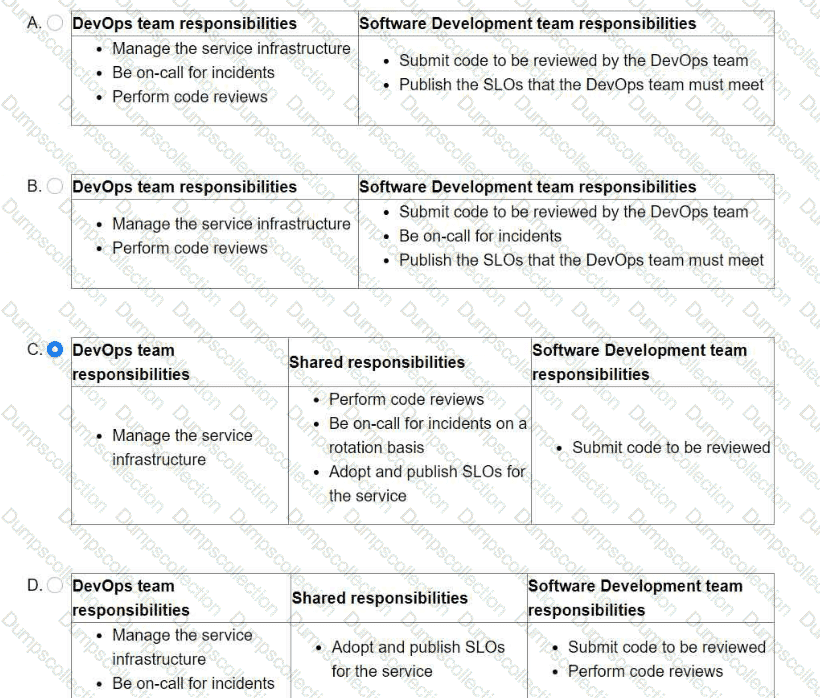Google Google Cloud Certified - Professional Cloud DevOps Engineer Exam Professional-Cloud-DevOps-Engineer Exam Dumps: Updated Questions & Answers (December 2025)
You are developing reusable infrastructure as code modules. Each module contains integration tests that launch the module in a test project. You are using GitHub for source control. You need to Continuously test your feature branch and ensure that all code is tested before changes are accepted. You need to implement a solution to automate the integration tests. What should you do?
You are deploying a Cloud Build job that deploys Terraform code when a Git branch is updated. While testing, you noticed that the job fails. You see the following error in the build logs:
Initializing the backend. ..
Error: Failed to get existing workspaces : querying Cloud Storage failed: googleapi : Error
403
You need to resolve the issue by following Google-recommended practices. What should you do?
You support a Node.js application running on Google Kubernetes Engine (GKE) in production. The application makes several HTTP requests to dependent applications. You want to anticipate which dependent applications might cause performance issues. What should you do?
You have migrated an e-commerce application to Google Cloud Platform (GCP). You want to prepare the application for the upcoming busy season. What should you do first to prepare for the busy season?
Your company has a Google Cloud resource hierarchy with folders for production test and development Your cyber security team needs to review your company's Google Cloud security posture to accelerate security issue identification and resolution You need to centralize the logs generated by Google Cloud services from all projects only inside your production folder to allow for alerting and near-real time analysis. What should you do?
You encountered a major service outage that affected all users of the service for multiple hours. After several hours of incident management, the service returned to normal, and user access was restored. You need to provide an incident summary to relevant stakeholders following the Site Reliability Engineering recommended practices. What should you do first?
You are leading a DevOps project for your organization. The DevOps team is responsible for managing the service infrastructure and being on-call for incidents. The Software Development team is responsible for writing, submitting, and reviewing code. Neither team has any published SLOs. You want to design a new joint-ownership model for a service between the DevOps team and the Software Development team. Which responsibilities should be assigned to each team in the new joint-ownership model?

Some of your production services are running in Google Kubernetes Engine (GKE) in the eu-west-1 region. Your build system runs in the us-west-1 region. You want to push the container images from your build system to a scalable registry to maximize the bandwidth for transferring the images to the cluster. What should you do?
You have an application running in Google Kubernetes Engine. The application invokes multiple services per request but responds too slowly. You need to identify which downstream service or services are causing the delay. What should you do?
Your team is preparing to launch a new API in Cloud Run. The API uses an OpenTelemetry agent to send distributed tracing data to Cloud Trace to monitor the time each request takes. The team has noticed inconsistent trace collection. You need to resolve the issue. What should you do?

